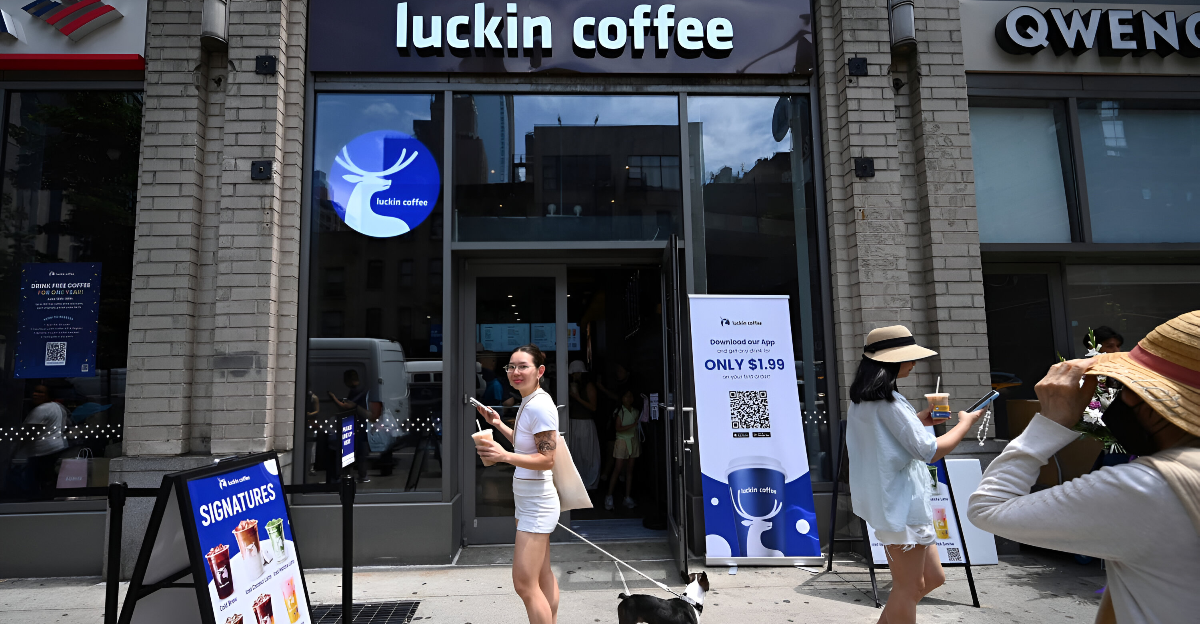
A new name quietly appears next to the recognized green mermaid. If you’re familiar with the streets of New York, you may have noticed blue-and-white coffee booths with QR codes and long lines of people waiting.
Not for Starbucks. The coffee scene in the U.S. is shifting, and a Chinese brand is at the center of it. Its rise concerns taste, tech, and international business strategy.
Not Just Another Café
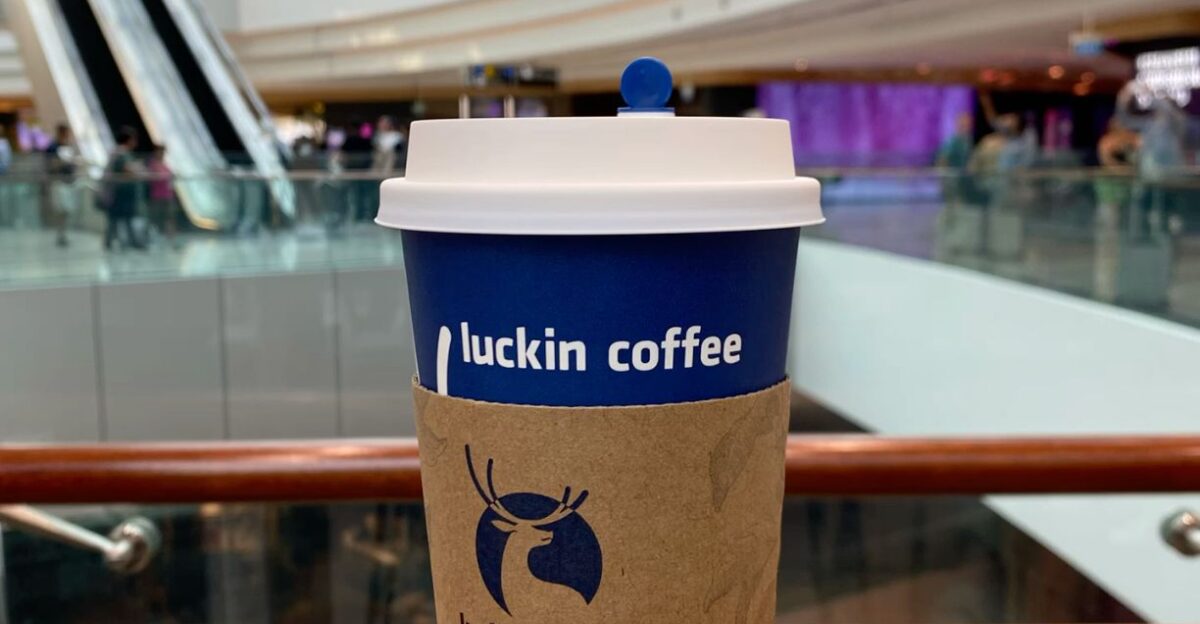
This isn’t your everyday corner coffee shop. Luckin Coffee, a Chinese brand, opened its first two U.S. stores in New York City on June 30, 2025, at 755 Broadway and 800 6th Avenue.
But they don’t just sell lattes. They offer a new coffee experience. Less staff, digital-only payments, and app-based orders are only the beginning. The stores are sleek, small, neat, and efficient, aimed at a distinct kind of customer.
The Target Is Young, Fast, and Online

Luckin doesn’t act like a cozy hangout. It’s designed for a modern generation on the move: young people who value speed, bargains, and simplicity.
Think fast coffee, ordered through the app and picked up from a booth. No cash, clutter, or chatting. Just a quick caffeine hit. It reflects how Gen Z experiences life, shops, and socializes today.
A Quiet Giant Back Home
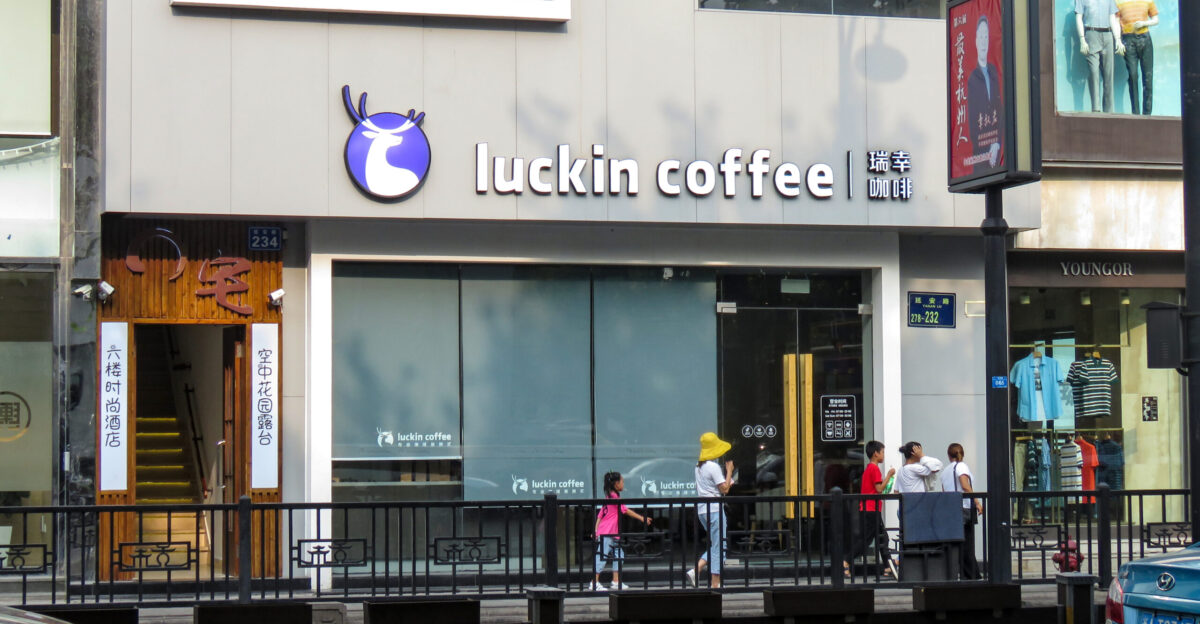
Before it came to America, Luckin Coffee had already made headlines in China. The company grew fast after its founding, reaching thousands of sites in just a few years.
Despite an accounting scandal in 2020, the brand enjoyed a revival. With over 24,000 stores globally as of Q1 2025, it has surpassed Starbucks in store count and market share in China.
What Made Luckin So Big in China?

Aggressive discounts, app-driven loyalty programs, and a focus on convenience drove Luckin’s growth. Instead of relying on the café model, it adopted the takeaway and delivery model from the start.
Its tech-first strategy succeeded, especially in cities where speed and mobile-first habits win. Starbucks didn’t adapt as fast, and Luckin came out ahead.
But It Wasn’t All Smooth

In 2020, Luckin faced a massive scandal: executives had fabricated more than $300 million in retail sales from at least April 2019 through January 2020.
The company’s stock was delisted from NASDAQ, and it settled to pay a $180 million penalty to settle SEC charges. Many thought it was all over.
But Luckin silently restructured, changed leadership, and focused on operations again. By 2023, it was back to being profitable. It’s now a turnaround success story. And it’s expanding.
A New Approach for a New Market
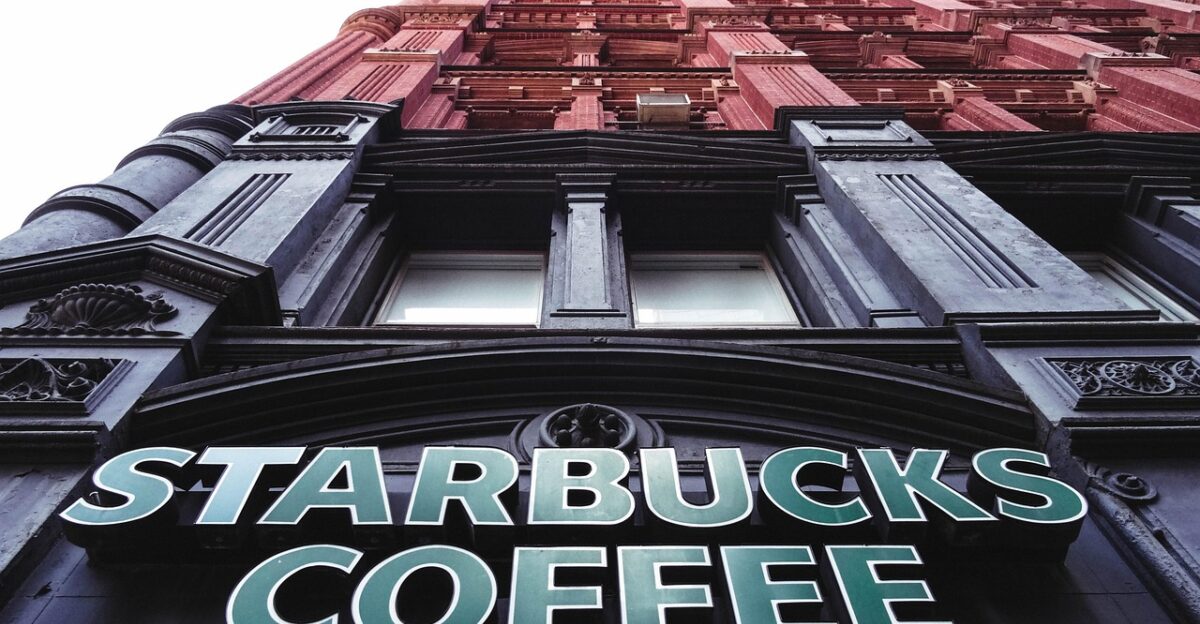
Luckin isn’t trying to copy Starbucks. Its model is distinct: smaller stores, lower prices, and regular app promotions. The brand is leaning heavily on social media talk, gamified apps, and limited-time giveaways to attract customers.
Why Now?
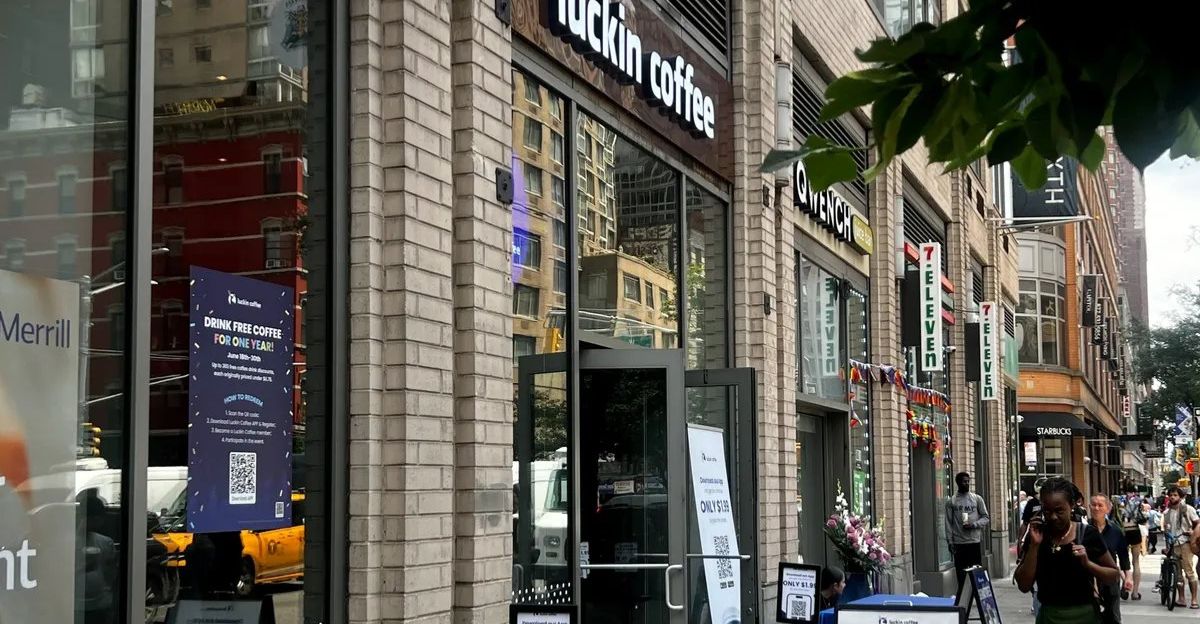
Luckin’s U.S. launch comes at a tough time, with an ongoing U.S.-China trade war, rising scrutiny of Chinese tech companies, and shifting consumer trust.
However, consumer interest in new, inexpensive coffee experiences is strong. Add the success of other Chinese brands expanding to the U.S., and Luckin’s entrance feels less like a gamble and more like perfect timing.
Luckin Isn’t Alone

Other Chinese brands are also planting their roots in the U.S. Various Chinese lifestyle and food brands have been experimenting with American markets, especially in major cities like New York. A trend is developing, and it’s more than just coffee.
Gen Z Drives the Demand
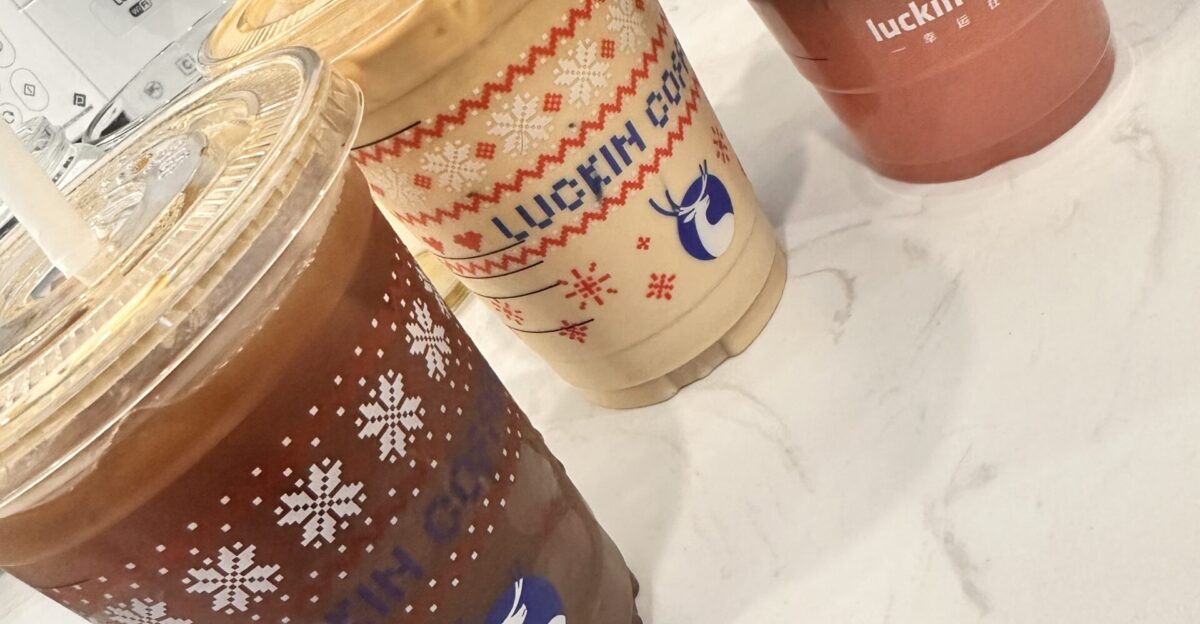
Younger U.S. consumers are open to trying foreign brands, especially when there’s digital convenience or social media buzz.
Chinese companies are capitalizing on this by creating experiences that are fresh, convenient, and Instagrammable.
Luckin’s tech-forward approach and promotional techniques hit the right notes for a generation that likes speed and rewards.
What Sets Luckin Apart?

Luckin isn’t trying to offer the finest roast or the coziest chairs. Its strength is scale and efficiency. Stores are designed for speed, and promotions drive traffic.
Unlike traditional U.S. cafés, which are often social spaces, Luckin treats coffee like a product to be optimized and delivered with minimal friction.
How Americans Are Reacting
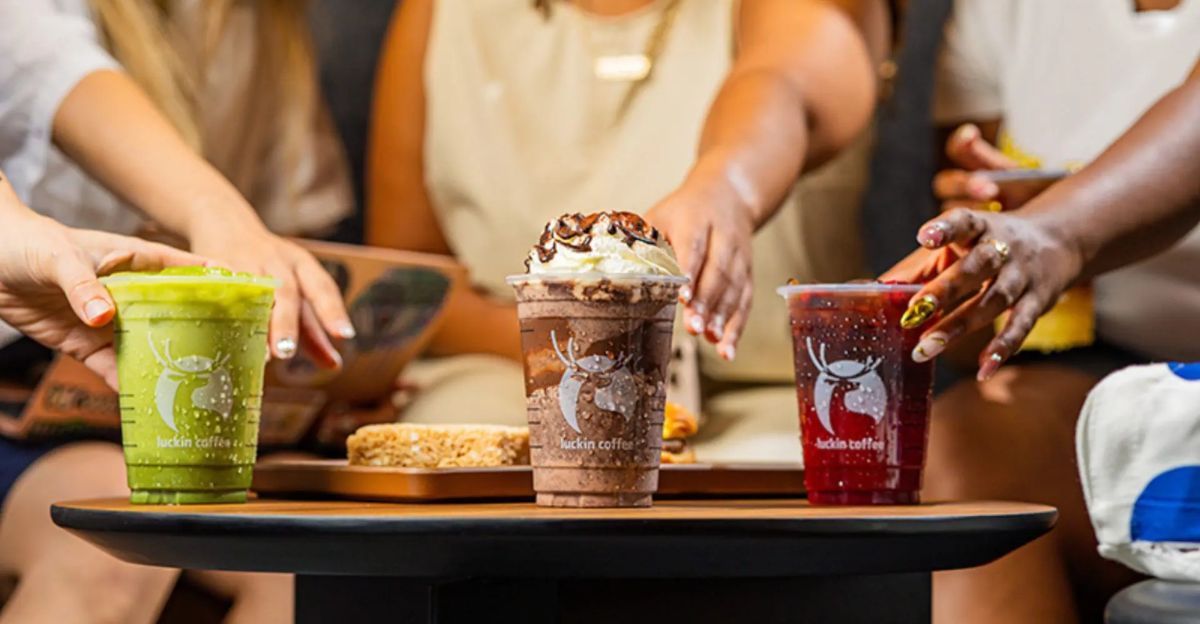
So far, reviews are mixed but curious. Customers appreciate the convenience and digital-first approach, but some miss the traditional “coffee shop vibe.”
Still, with strong marketing and a tech-savvy rollout, Luckin is creating a niche. It could win more fans quickly if it continues offering competitive value, especially during inflationary times.
Starbucks Watches Closely

Starbucks hasn’t commented yet, but the competition is real. In China, Luckin got ahead by offering faster, cheaper options tailored to mobile users.
In the U.S., Starbucks still monopolizes, but it may need to adapt again, just as it did after Dunkin’ and indie cafés pushed it in the early 2000s.
What Could Go Wrong?
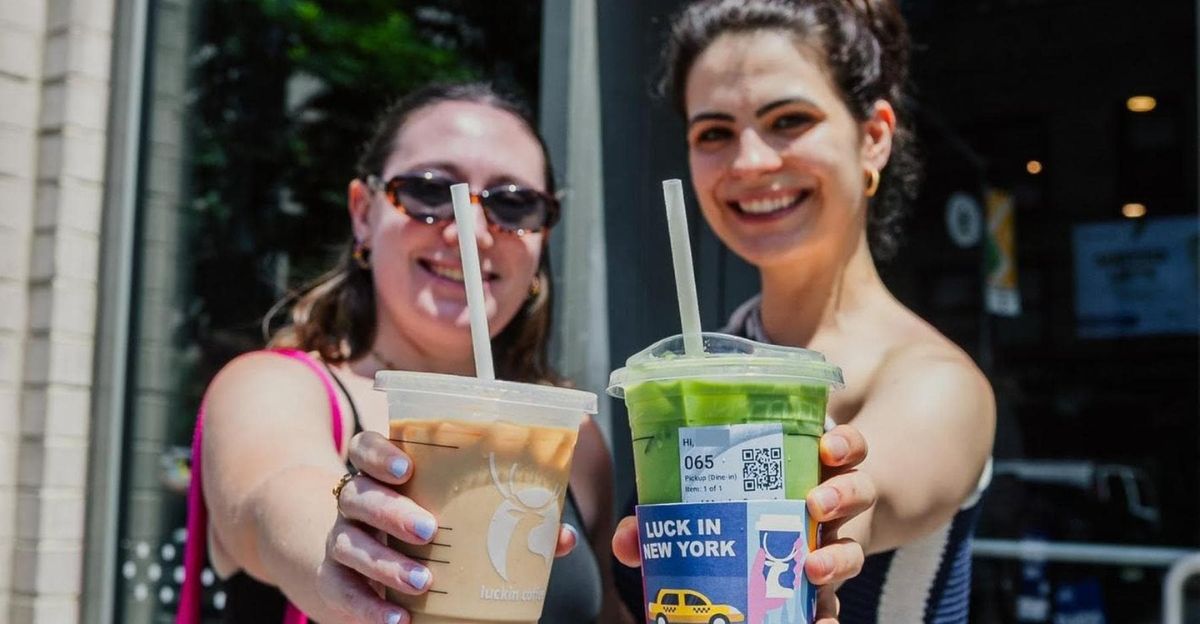
There are challenges ahead. U.S.-China tensions could affect public perception. Regulatory scrutiny is likely. And coffee culture in the U.S. isn’t uniform.
New York isn’t the same as Austin or Chicago. Luckin will need to localize intelligently and manage its reputation carefully, especially given its past with the accounting scandal.
What This Expansion Really Means
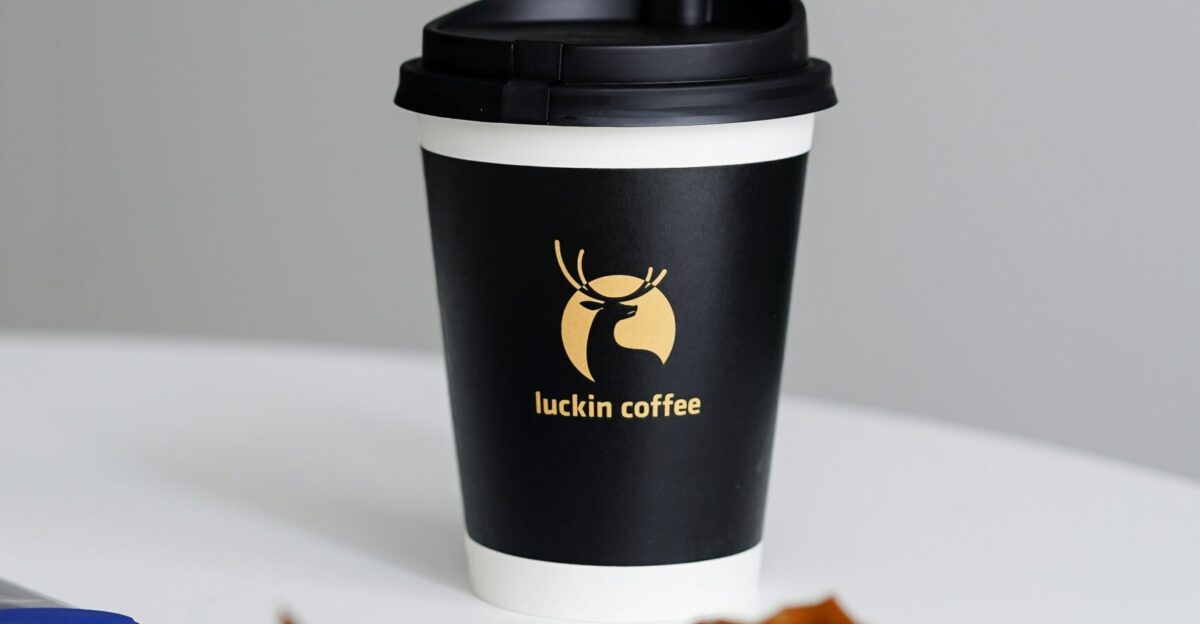
Luckin’s move isn’t just about coffee. It’s about how global brands shift: adapting tech, targeting younger buyers, and penetrating new markets.
The line between East and West is blurring in lifestyle brands. Whether or not Luckin becomes a household name, its U.S. launch signals that the coffee game is changing fast.
